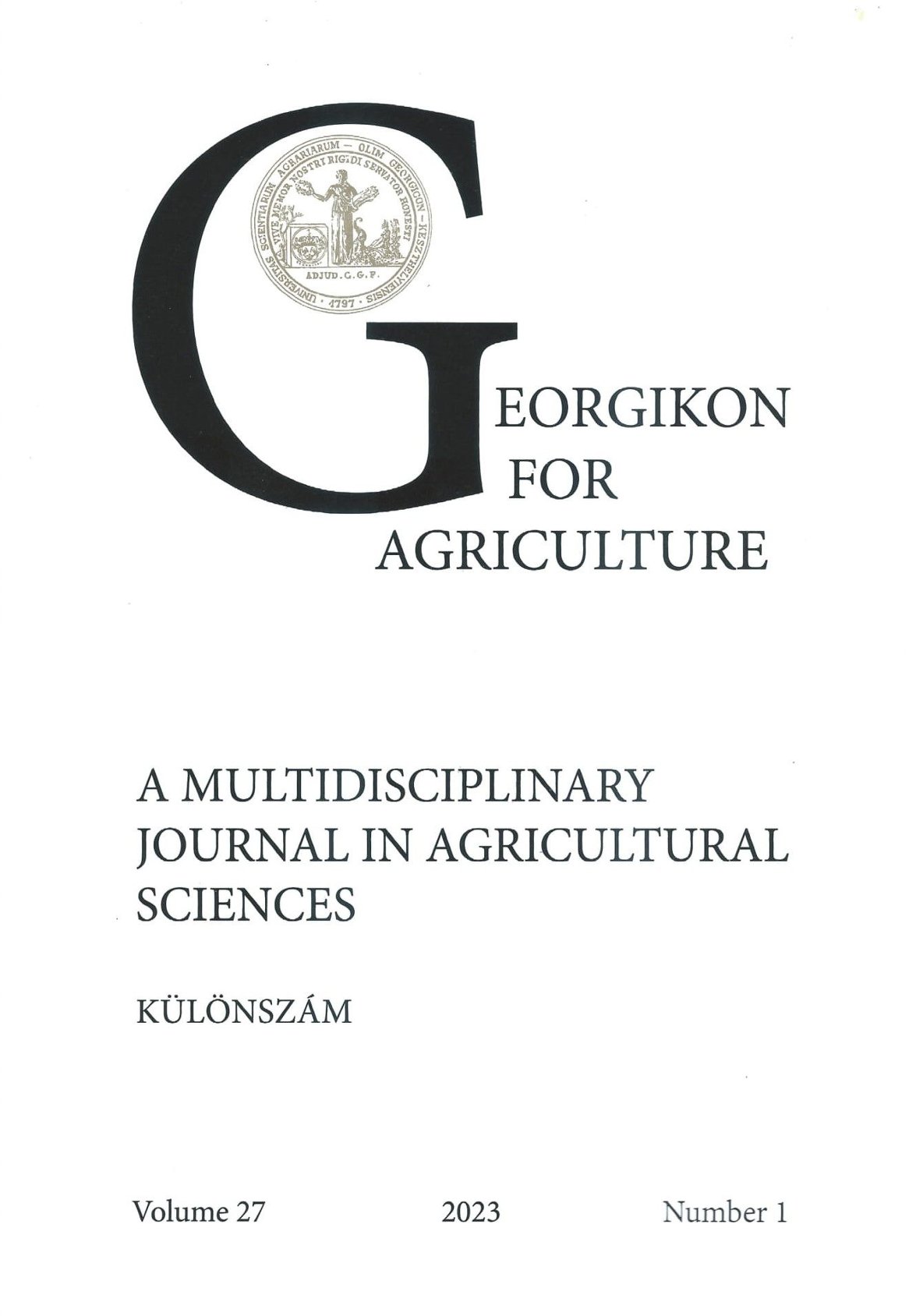Hazai szőlőültetvények virológiai vizsgálata
Kulcsszavak:
szőlő, vírus, GLRaV, DAS ELISAAbsztrakt
A vírusfertőzések hatására a szőlő környezeti tényezőkkel szembeni ellenállóképessége és a terméshozama csökken, romlik a termés minősége, ezáltal jelentős gazdasági károk keletkezhetnek, amely függ a fajta fogékonyságától, a termőhely adottságaitól és a termesztéstechnológiától. Vizsgálatunk célja néhány Mátrai és a Badacsonyi borvidéken található szőlőültetvény vírusfertőzöttségének szerológiai módszerekkel történő meghatározása volt. A kísérletben szereplő ültetvényekben a GLRaV-1, a GLRaV-2 és a GFkV volt a leggyakoribb. Eredményeink alátámasztják, hogy Magyarországon a GLRaV-1, GLRaV-2 és a GFkV a domináns a szőlővírusok között. A mintákban néhány esetben GLRaV-3, GLRaV-6 és a GLRaV-7 jelenlétét igazoltuk. A komplex, egy időben jelenlévő fertőzések meghatározó szerepet tölthetnek be a tőkék leromlásában és pusztulásában.
Hivatkozások
Apró M., Cseh E., Járvás M., Csáky J. és Takács A. P. 2013. Magyarországon előforduló szőlővírusok 2012. évi vizsgálata. In: Horváth József és mtsai. (szerk) 59. Növényvédelmi Tudományos Napok, Összefoglalók. Budapest
Clark, M. F. and Adams, A. N. 1977. Characteristics of the microplate method of enzyme linked immunosorbent assay for the detection of plant viruses. Journal of General Virology 34. 475-483.
Cseh E., Lázár J., Takács A., Kazinczi G. és Gáborjányi R. 2008. A szőlő Magyarországon előforduló és várhatóan megjelenő vírusos betegségeinek a kórokozóinak áttekintése. Növényvédelem 44(11). 535-542.
Lázár J. 2016. A szaporítótelepek évenkénti növényegészségügyi vizsgálata. Agrofórum 66(extra) 20-25.
Lázár J., Kölber M., Mikulás J., Farkas G. és Lehoczky J. 1994. Magyarország jelentős szőlőbetegségei. 40. Növényvédelmi Tudományos Napok. 87.
Lehoczky J. 1992. Szőlőtőkék korai elhalásának etiológiája. Doktori tézisek összefoglalása. Budapest
Maree, H. J., Amleida, R. P. P., Bester, R., Chooi, K. M., Cohen, D., V., Dolja, V. V., Fuchs, F. M., Golino, A. D., Jooste, A, Martelli, G., Naidu, R., Rowhani, A., Saldarelli, P. and Burger, T. J. 2013. Grapevine leafroll-associated virus 3. Frontiers in Microbiology 4. 82.
Naidu, R. A., O’neil, S. and Walsh, D. 2008. Grapevine Leafroll Disease. WSU Extension Bulletin EB2027E 20.
Letöltések
Megjelent
Folyóirat szám
Rovat
License
Copyright (c) 2023 Takács András Péter, Horváth Ádám, Kormos Éva, Pásztor György

This work is licensed under a Creative Commons Attribution-NonCommercial-NoDerivatives 4.0 International License.
The articel is under the Creative Commons 4.0 standard licenc: CC-BY-NC-ND-4.0. Under the following terms: You must give appropriate credit, provide a link to the license, and indicate if changes were made. You may do so in any reasonable manner, but not in any way that suggests the licensor endorses you or your use. You may not use the material for commercial purposes. If you remix, transform, or build upon the material, you may not distribute the modified material. You may not apply legal terms or technological measures that legally restrict others from doing anything the license permits.




 Georgikon for Agriculture
Georgikon for Agriculture